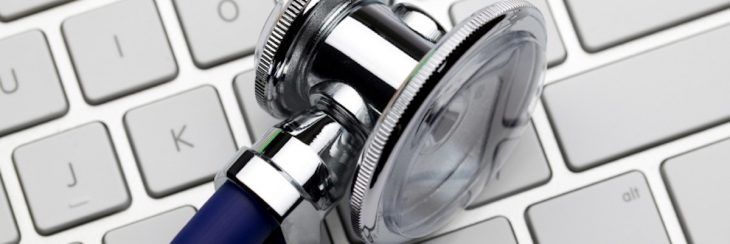Digital health revolution underway with IoT connections, could reduce costs, lead to more proactive care
by February 15, 2017 4:20 pm 487 views

The massive healthcare industry is quietly being turned on its head as connected technology – defined as the Internet of Things (IoT) – finds its way into this sector.
Wearable technology has already become mainstream with the Apple Watch, FitBit and other devices that track sleep and fitness habits, pulse rates and blood pressure. Frances Rabuck, an analyst with Rabuck Associates, recently took part in a webinar by Information Management that looked at those industries like healthcare that are ripe for disruption from IoT advances. He said it was RFID technology that’s been around since the 1990s that has made IoT possible.
“All things we use today will eventually be connected together,” Rabuck said during the webcast. “In the past, information was sent from computers and people but now it’s being sent to things that can receive the data and act upon it. Today the number of things connected to the internet far surpasses people.”
Talk Business & Politics recently asked Eric Pianalto, president of Mercy Hospital Northwest Arkansas, how using IoT was beneficial to daily operations. Pianalto said the hospital is part of a multi-state operation that uses IoT technology to monitor chronically ill patients at home. He said the technology is key in helping hospital employees measure health metrics on patients at home in Arkansas that are monitored from a St. Louis base.
Pianalto said the form of tele-health is beneficial in keeping down healthcare costs and it’s a proactive approach in trying to recognize symptoms as early as possible. For instance, a patient diagnosed with congestive heart failure is often in and out of the emergency room when fluids build up in the body. By digitally monitoring the patients at home with daily readings, doctors and nurses in Mercy’s St. Louis hub can easily spot potential trouble before it happens and notify the primary care doctor to intervene with the necessary treatment to keep the patient from ending up in the emergency room.
Technology in the home connected to healthcare workers can also indicate when a patient has forgotten to take medicine and an alert is sent to the doctor.
Pianalto said biomedical devices and their use in healthcare are gaining steam. He believes healthcare providers will begin using more biomedical devices that collect and transmit data, particularly in the aging population. By the end of 2017, there are expected to be more than 80 million wearable health devices. While they’re predominantly used for personal reasons, a day is coming when they will do much more, he believes.
Rabuck said combining sensors in the home and on the body will likely be an efficient way to help predict one’s likelihood of falling, adding that falls among the elderly are often critical and costly. Some hospitals are also beginning to implement “smart beds” that can detect when patients are trying to get up. These beds can automatically adjust to assist the patient as they rise out of the bed.
One theory Rabuck discussed was the potential impact on organ transplants when self-driving cars become more mainstream. He said self-driving cars will likely mean fewer fatality accidents, and 80% of organ donations are a direct result of automobile accidents, she said.
“If there are substantially fewer fatality accidents, that will decrease the number of organs available for transplant,” Rabuck said.
In Gartner’s Hype Cycle of Emerging Technologies report last year, researchers predicted it will take between five and 10 years for full IoT adoption by healthcare providers. Some of the concerns revolve around privacy as the data is largely stored in the cloud and is at risk by hackers. Gartner’s also said there is still little oversight of IoT.
Pianalto said Mercy was working with state and federal legislators on issues surrounding telemedicine and IoT devices. Some of the concerns by healthcare providers include making sure the technology infrastructure is sufficient to handle the anticipated 20 billion things connected via IoT by the end of this decade.
